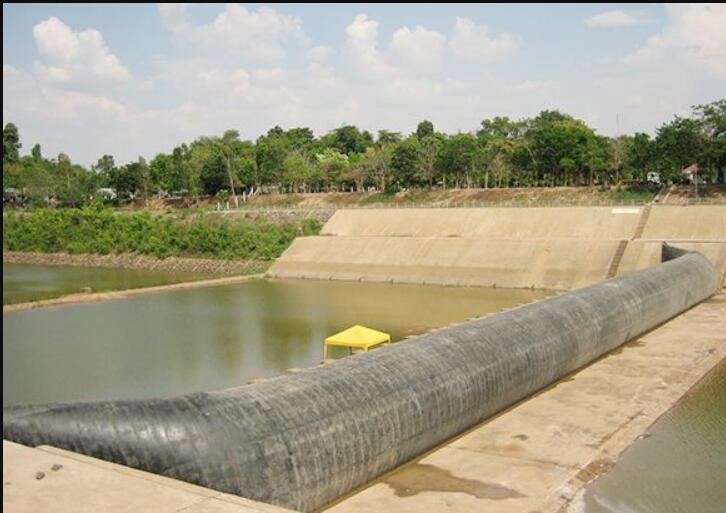- Automobiles & Motorcycles
- Beauty & Personal Care
- Business Services
- Chemicals
- Construction & Real Estate
- Consumer Electronics
- Electrical Equipment & Supplies
- Electronic Components & Supplies
- Energy
- Environment
- Excess Inventory
- Fashion Accessories
- Food & Beverage
- Furniture
- Gifts & Crafts
- Hardware
- Health & Medical
- Home & Garden
- Home Appliances
- Lights & Lighting
- Luggage, Bags & Cases
- Machinery
- Measurement & Analysis Instruments
- Mechanical Parts & Fabrication Services
- Minerals & Metallurgy
- Office & School Supplies
- Packaging & Printing
- Rubber & Plastics
- Security & Protection
- Service Equipment
- Shoes & Accessories
- Sports & Entertainment
- Telecommunications
- Textiles & Leather Products
- Timepieces, Jewelry, Eyewear
- Tools
- Toys & Hobbies
- Transportation
Hydraulic lifting dam and its characteristics
Hydraulic lifting dams, also known as adjustable or inflatable dams, are cutting-edge structures designed to control water levels in rivers, streams, and canals. These dams offer a flexible and sustainable approach to water management, enabling efficient flood control, hydropower generation, and ecosystem preservation. In this article, we will explore the characteristics and benefits of hydraulic lifting dams, highlighting their role in modern water resource management and renewable energy production.
Characteristics of Hydraulic Lifting Dams:
Adjustable Height: The primary feature of hydraulic lifting dams is their ability to adjust the height of the dam structure. Unlike traditional fixed dams, hydraulic lifting dams can be raised or lowered based on water flow conditions, seasonal variations, and specific water management needs. This adjustability offers unprecedented control over water levels, allowing for optimized water storage, flood mitigation, and environmental preservation.
Flexible and Modular Design: Hydraulic lifting dams are designed with a modular approach, consisting of interconnected segments or cells. Each cell can be independently inflated or deflated to change the dam's height and water storage capacity. This flexibility allows engineers to customize the dam's configuration to suit varying water flow scenarios and site-specific requirements.
Inflatable Bladders or Gates: The heart of hydraulic lifting dams lies in the inflatable bladders or gates that form the dam structure. These bladders are typically made of durable and flexible materials, such as reinforced rubber or high-strength fabric. When inflated, the bladders rise to create a dam, effectively blocking the flow of water. When deflated, the bladders collapse, allowing water to pass through.

Quick Response Time: Hydraulic lifting dams offer rapid response times in adjusting water levels. By controlling the inflation and deflation of the bladders, operators can quickly respond to changing water conditions, such as sudden floods or droughts. This dynamic response capability enhances flood control measures and reduces the risk of water-related disasters.
Related articles:Construction & Real Estate
Neoprene Bearing Pad: Versatile Solution for Structural Support
Glass Fused to Steel Tanks: Innovation in Liquid Storage Solutions
Exploring the Benefits and Functionality of W-Beam Highway Guardrails
Why Do People Like Shipping Container Homes?
What is the difference between strip seal and modular expansion joint?
The Mesmerizing World of Music Fountains
Enhanced Hydropower Generation: The adjustability of hydraulic lifting dams makes them an excellent choice for optimizing hydropower generation. By regulating water levels and flow rates, dam operators can maximize power output during peak demand periods and conserve water during low-demand periods. This dynamic control contributes to more efficient and sustainable hydropower operations.
Ecological Benefits: Hydraulic lifting dams offer ecological advantages by mimicking natural water flow patterns. By adjusting water levels to replicate seasonal fluctuations, these dams support the breeding and migration of aquatic species. The controlled release of water can also create or restore wetland habitats, promoting biodiversity and supporting the overall health of aquatic ecosystems.
Cost-Effective and Low Environmental Impact: Compared to traditional fixed dams, hydraulic lifting dams can be more cost-effective and have lower environmental impacts. Their modular design allows for easier installation, maintenance, and potential relocation. Additionally, they minimize the risk of sediment buildup behind the dam, reducing the need for costly and environmentally disruptive dredging operations.
Conclusion:
Hydraulic Elevator Dam represent a significant advancement in water management and renewable energy generation. Their adjustable height, flexible design, quick response times, and ecological benefits make them indispensable tools for efficient flood control, hydropower optimization, and ecosystem preservation. By harnessing the power of hydraulic lifting dams, water resource managers and energy producers can work towards a sustainable future with improved water security, reduced environmental impacts, and enhanced renewable energy generation.
What are the different types of redispersible polymer powder?
Are FRP Backwater Tanks the Future of Sustainable Water Management?
Choosing the Right Geogrid for Your Project: Factors to Consider
What is Construction Grade HPMC?
What are the benefits of film faced plywood?
Expandable Container Houses: An Innovative Solution for Modern Living
From Snowmobiles to Snow Groomers: The Evolution of Snow Maintenance
Related Articles
If you are interested in sending in a Guest Blogger Submission,welcome to write for us!











Comments
0